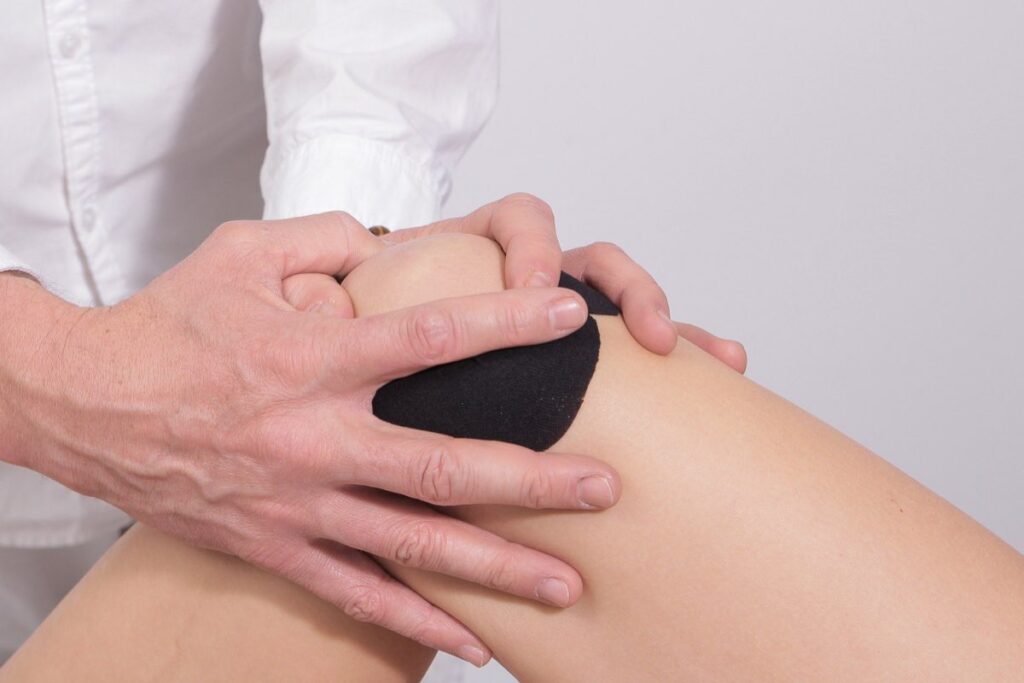Could Patellofemoral Pain Syndrome Be the Cause of Your Knee Pain?
Whether you’re trying out a new sport, amping up your training routine, or are generally just an active person, knee pain can slow you down or sideline you altogether. According to a recent review by The National Center for Biotechnology Information, one of the most common forms of knee pain is patellofemoral pain, or PFP, with “…one in five of the general population experiencing pain within the last year”.
Patellofemoral pain and patellofemoral pain syndrome (PFPS) are fancy names for somewhat common knee problems. They are general terms used to describe the pain felt on the front of the knee where your patella (kneecap) meets your thigh bone (femur).

PFP and PFPS are ordinarily a result of overuse and occur most frequently, although not exclusively, among athletes and active teenagers. While often treatable through home remedies, the dull, achingly persistent pain requires some action — and sometimes inaction — to get you back doing the activities you enjoy.
Causes of Patellofemoral Pain Syndrome
The exact cause of patellofemoral pain isn’t always known, but it’s often associated with an increase in activity and overuse, so much so it’s known as “runner’s knee” or “jumper’s knee.” Non-athletes may also experience it as a result of extended periods of time sitting, kneeling, walking, or climbing stairs.
Women are twice as likely as men to develop PFP, perhaps due to the increased width of their pelvises, which impacts the angle of the knee joint. It can also be brought on by muscular imbalances or structural issues, such as patellofemoral malalignment.
Some of the causes of patellofemoral pain include:
- Overuse through workouts and sports that involve running, jumping, and squatting, which repetitively stress your kneecap and its surrounding soft tissues.
- An increase in activity levels — whether frequency, intensity, or duration.
- Malalignment of the knee, which can cause improper tracking of the kneecap when the knee is bent.
- Malalignment of legs, hips, and ankles, leading to pain from the kneecap shifting too far toward the outside or inside of the leg.
- Muscle weakness or imbalances in the hips and knees, preventing proper support of the knee, especially during repetitive movements.
- Underdeveloped quadriceps muscles, tight hamstrings, or a tight achilles tendon.
- Improper form, such as feet that roll inward while thigh muscles pull the knee outward.
- Knee injuries like dislocations or fractures. Even past surgeries increase the risk of PFP.
- Equipment issues like poor foot support or hard playing surfaces.

Common Symptoms
The most common symptom of patellofemoral pain syndrome is a dull, aching sensation at the front of the knee. The knee can become stiff, and you might hear a popping, cracking, or grinding noise when standing up or climbing stairs. Patellofemoral pain can make it difficult to kneel down and uncomfortable to perform everyday activities.
Your kneecap may become tender to the touch. PFP usually begins gradually and gets worse over time, and can affect one or both knees. It can lead to a feeling of general weakness or knee instability.
Can You Prevent Patellofemoral Pain Syndrome?
There are certain steps you can take to help prevent knee pain. Maintaining overall muscular strength, especially in your thighs, hips, and around your knee helps keep the knee supported and tracking properly.
If you’re overweight, losing excess pounds reduces the stress on your knees. Always increase the intensity and duration of your activity gradually over time, and take time to stretch and warm up before any exercise.
Non-Surgical Treatment Options
The goals for the treatment of patellofemoral pain are to relieve pain and restore optimal function. In many cases, home treatment is enough to resolve the pain.
- Take a break: Stop doing the activity that’s making your knee(s) hurt. Explore other routines or switch to a low-impact exercise like swimming or using an elliptical machine that are less stressful on your knees.
- RICE: RICE stands for rest, ice, compression, and elevation. Avoid putting stress on the painful knee. Apply towel-wrapped ice packs for up to 20 minutes several times a day. Use an elastic bandage or brace to compress the area, leaving a hole around the kneecap and wrapping in a way that does not cause additional pain. As frequently as you’re able, elevate your knee comfortably to a level above your heart.
- Focus on alignment: Talk to your doctor about patellofemoral pain syndrome exercises and stretches to improve flexibility and strength. Work with her or him to optimize your form and technique to ensure your alignment is correct and to increase your knee’s strength and range of motion.
- Consider support: Make sure your shoes fit well, consider supportive orthotic insoles or a runner’s knee brace, and explore whether you can play or run on a softer surface.
- Talk to your doctor: Ask your doctor about nonsteroidal anti-inflammatory drugs like ibuprofen and naproxen to help reduce swelling and alleviate pain.
Since there are many possible causes, it’s important to work with an orthopedic knee specialist to determine the best treatment.
Surgical Treatment Options
In severe cases of patellofemoral pain and misalignment, surgery may be required. The goal of surgical treatments for PFPs is to correct structural issues, remove damaged bone or cartilage, or move tendons to correct the misalignment.
Left untreated, patellofemoral pain and misalignment generally worsen with time. Continuing to use the affected knee(s) can cause further injury and pain. Once relieved, patellofemoral pain can recur if you do not properly adjust your training routine or malalignment.
If you are experiencing knee pain and you’d like to speak to a knee specialist, please contact us. We will be happy to answer your questions.
Leave a Reply